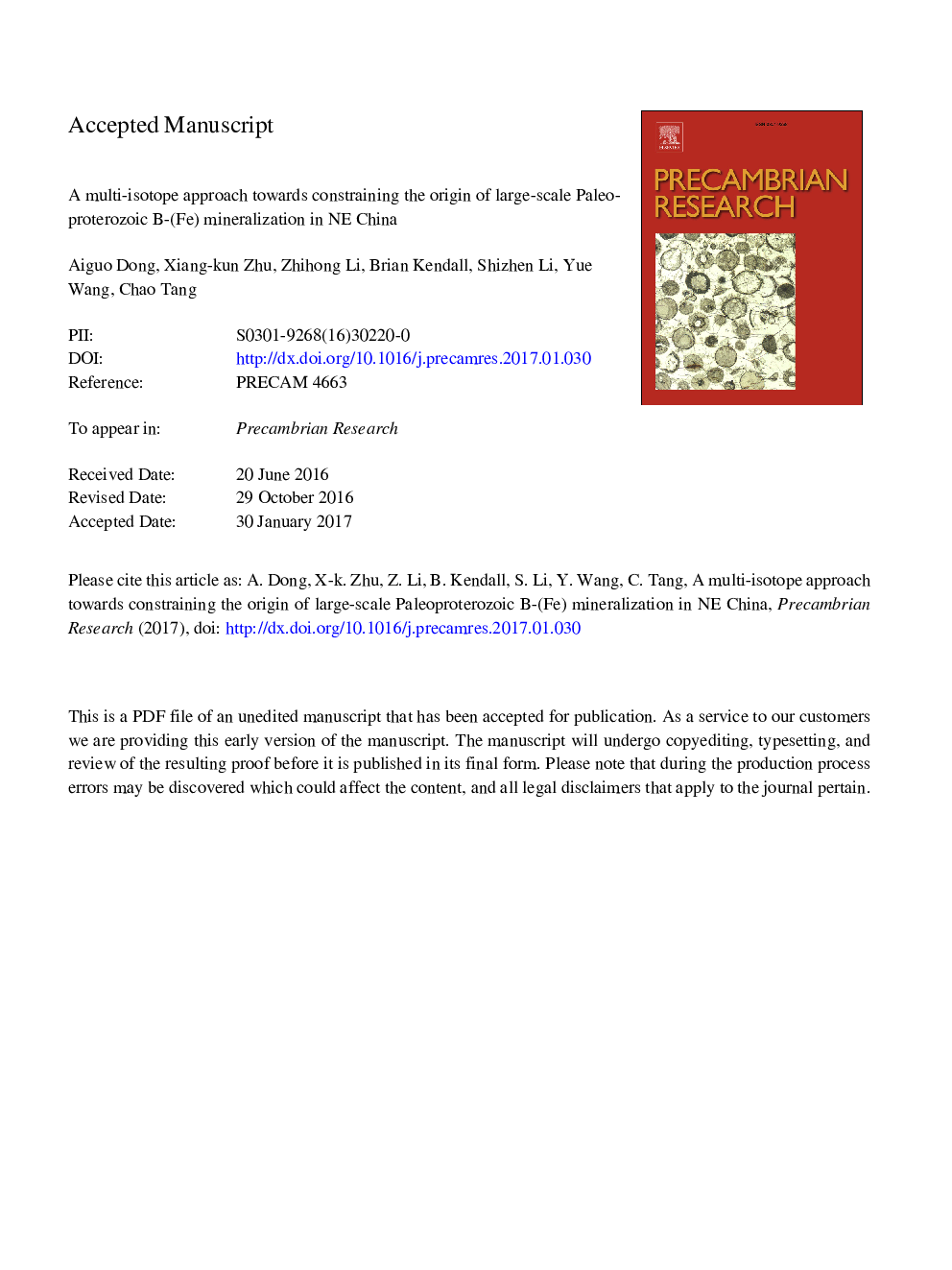| کد مقاله | کد نشریه | سال انتشار | مقاله انگلیسی | نسخه تمام متن |
|---|---|---|---|---|
| 5784759 | 1639583 | 2017 | 55 صفحه PDF | دانلود رایگان |
عنوان انگلیسی مقاله ISI
A multi-isotope approach towards constraining the origin of large-scale Paleoproterozoic B-(Fe) mineralization in NE China
دانلود مقاله + سفارش ترجمه
دانلود مقاله ISI انگلیسی
رایگان برای ایرانیان
کلمات کلیدی
موضوعات مرتبط
مهندسی و علوم پایه
علوم زمین و سیارات
ژئوشیمی و پترولوژی
پیش نمایش صفحه اول مقاله

چکیده انگلیسی
Borate ore deposits occur predominantly in Phanerozoic evaporative sedimentary environments but are scarce in Precambrian strata. However, massive B- and Mg-rich borate deposits are abundant in the Paleoproterozoic strata of Northeast (NE) China. In addition, several of these borate deposits are dominated by Fe (e.g., >60% Fe2O3 content in the Wengquangou deposit). To constrain the origin of these unusual deposits, we obtained B, Fe, and Mg isotope data on the wall rocks and ores of the Mg-rich Houxianyu borate deposit and the Fe-rich Wengquangou borate deposit in NE China. The δ11B values of the borate deposits (10.7 ± 4.4â°, n = 15) are higher than most types of igneous and non-evaporative sedimentary rocks, suggesting that B is of evaporative sedimentary origin. However, the borate deposits have a limited range of δ56Fe values near 0â° (0.05 ± 0.18â°, n = 24), which is similar to igneous rocks and thus points to a magmatic origin for the Fe. The δ26Mg values of the ores and associated rocks (â0.52 ± 0.34â°, n = 24) are intermediate between Mg-rich carbonate rocks and igneous rocks, suggesting a mixed sedimentary and magmatic origin for the Mg. Regional metamorphism and intense deformation modified the deposits significantly by promoting metasomatic alteration of the igneous rocks and evaporite minerals, thus resulting in mixing of magmatic and sedimentary-evaporative sources as well as recrystallization of the sedimentary borate precursors to metamorphic borate minerals. Hence, the B, Fe, and Mg isotope data together with geological and mineralogical observations indicate that formation of the Paleoproterozoic B-(Fe) deposits in NE China involved a three-stage process: enrichment of B and Mg by evaporative sedimentation, introduction of Fe and additional Mg by volcanism, and modification by regional metamorphism/metasomatism.
ناشر
Database: Elsevier - ScienceDirect (ساینس دایرکت)
Journal: Precambrian Research - Volume 292, May 2017, Pages 115-129
Journal: Precambrian Research - Volume 292, May 2017, Pages 115-129
نویسندگان
Aiguo Dong, Xiang-kun Zhu, Zhihong Li, Brian Kendall, Shizhen Li, Yue Wang, Chao Tang,